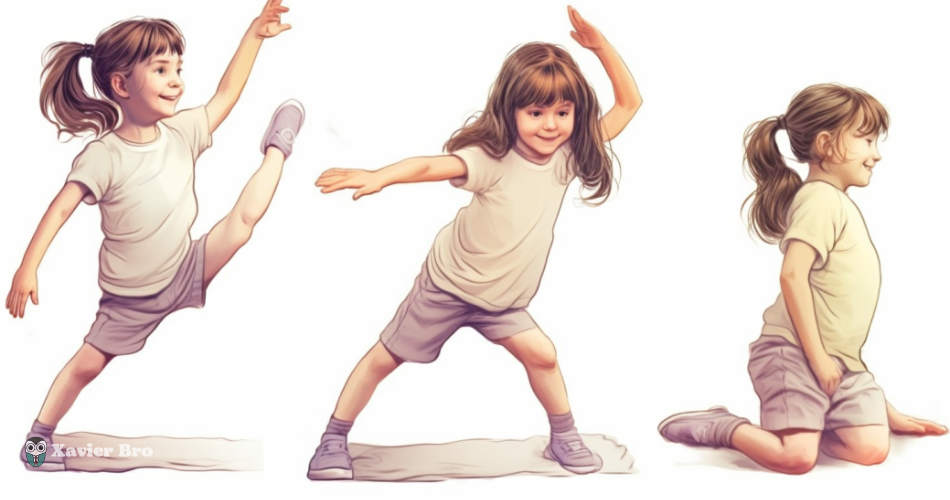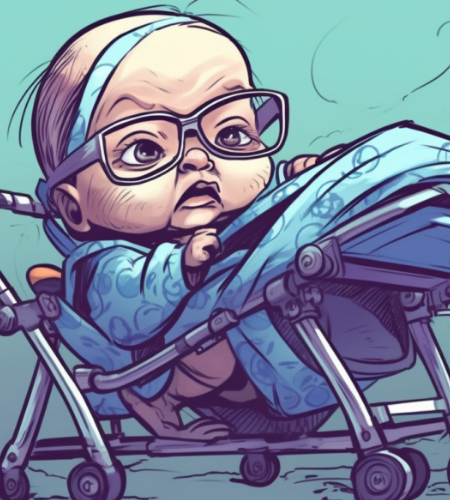Bones are the complex networks that construct the framework of our body. They help our organs, shield our brain and spinal cord, and allow us to move. However, not all bones are paired. Some are extended and light, some are short and wide, and some are flat and curved. And some still require to be fully developed at birth. Do you know how many bones are babies born with?
They have about 300 bones at birth, while most grown-ups have 206. During incubation, the skeletal system that will one day sustain your baby’s entire body begins as cartilage.
How Many Bones Are Babies Born With?
This article will explore how many bones babies are born with.
1- Three Essential Bones of the Head
The head has 22 bones, which can be separated into the skull and facial Skeleton. The frontal bones are two bones to possess the forehead and the upper portion of the eye. The occipital bone is a bone that constitutes the spine and bottom of the skull. Also, the mandible is a single bone forming the descending jaw and carries the lower teeth.
2- Types of Vertebrae of the Backbone
The backbone has 33 bones. The spine is split into five parts. Cervical vertebrae are seven and comprise the neck. They are digited C1 to C7. C1 has no body or spinous method but two lateral assemblies backing the skull. C2 has a tooth-like point called the den. Thoracic vertebrae are 12 in numeral and constitute the upper back. They are numbered T1 to T12.
Lumbar vertebrae are five and constitute the lower back. They are numbered L1 to L5. Sacral vertebrae are five in digit but merged into one bone named the sacrum. Coccygeal vertebrae are three to four but connected into one coccyx bone called the tailbone.
3- Bones Supporting the Shoulders of Babies Born With
The bones supporting the shoulders of babies born with are clavicles and scapulae. The clavicles are elongated, curved bones touching the breastbone to the scapulae. They have a cartilaginous portion at each stop that ossifies after.
In addition, the scapulae have three borders, three angles, and two processes. They frame with the clavicles at their acromion function and the humerus at their glenoid cavity. The humerus is the longest and most significant bone of the upper stem.
4- Movement of the Lower Limbs
The lower limbs have thirty bones separately. There are four in the pelvis, one per thigh, one per knee, two per leg, seven on two sides of the ankle, ten in each foot, and fourteen in each toe. The activity of the lower limbs of newborns born is feasible because of several sorts of joints. There is a hip joint. The knee joint is a hinge of the femur and tibia.
The ankle joint is a tibia, fibula, and talus hinge. The subtalar joint is a gliding joint of the other tarsal. Also, the metatarsophalangeal joints are condyloid joints among the metatarsals and phalanges. The interphalangeal joints are hinge joints between the phalanges.
5- Ilium, Ischium, Pubis, and Sacrum of the Pelvis
The pelvis is a skinny ring that combines the vertebral column with the descending limbs. It includes two hip bones, the sacrum, and the coccyx. The babies are born with the ilium, ischium, pubis, and pelvis sacrum. The ileum is the hip bone’s most extensive and prominent part.

Moreover, the ischium is the softest and most vital part of the hip bone. The pubis is the anterior part of the hip bone. The sacrum is a triangular bone developed by five fused vertebrae (S1-S5).
6- Clavicle, Scapula, and Humerus of the Shoulder
Two clusters of bones back the shoulder. It includes the clavicles and the scapulae. These bones include elements of both the axial and the appendicular Skeleton. The three bones of the shoulder are among them.
Also, the clavicles are extended and curved, which hook the sternum to the scapulae. The scapulae fib on the upper back. The humerus is the upper limb’s most extended and significant bone.
7- Sternum and Ribs of the Chest
The chest is a skeletal cage that surrounds and protects the heart and lungs. It includes twelve ribs connecting to twelve thoracic vertebrae at the backbone and the sternum at the front side. The sternum develops the anterior midline of the thorax. The ribs are not fully formed at birth but have cartilaginous components that calcify later.
8- Carpals, Metacarpals, and Phalanges of the Hands
The hands have twenty-seven bones each. It has eight in each wrist, five in each palm, and fourteen in each finger—the carpals frame with each other by sliding joints and with the radius. The metacarpals are numbered from one to five, from thumb to small finger. Also, the phalanges compose fourteen pieces in each finger. The thumb has two, and the fingers have three phalanges each.
9- Tarsals, Metatarsals, and Phalanges of the Feet
The feet have twenty-six bones each. They are seven in each ankle, five in each foot, and 14 in each toe. The tarsals are sharp bones that include two levels in each ankle. The proximal group consists of the talus and calcaneus.
Moreover, the metatarsals are long bones that include five rays per foot. They are 1 to 5 from big toe to tiny toe. The phalanges include 14 segments in each toe. The big toe has two, and the other toes have three phalanges each.
Conclusion
Infants are born with additional bones than adults, so why? And how do their bones vary as they develop? Your newborn’s bones are unique networks that adapt to their requirements and conditions.
From cartilage to bone, from loose to stern, from multiple to rare, your baby’s bones experience remarkable modifications as they develop. You can admire their growth and care for their health by comprehending how your baby’s bones modify.
FAQs on How Many Bones Are Babies Born With
Babies have more delicate and pliable bones than grown-ups, making them less possible to break them. However, if your baby has suffered a slip or damage, you should look for signs of a rupture, such as a node, bruising, deformation, or pain.
You can sustain your baby’s bone fitness by providing sufficient nutrition, particularly calcium and vitamin D. Breast milk or formula supplies enough calcium for newborns under six months old.
I hope you enjoy our article, do check out more of our amazing articles.
